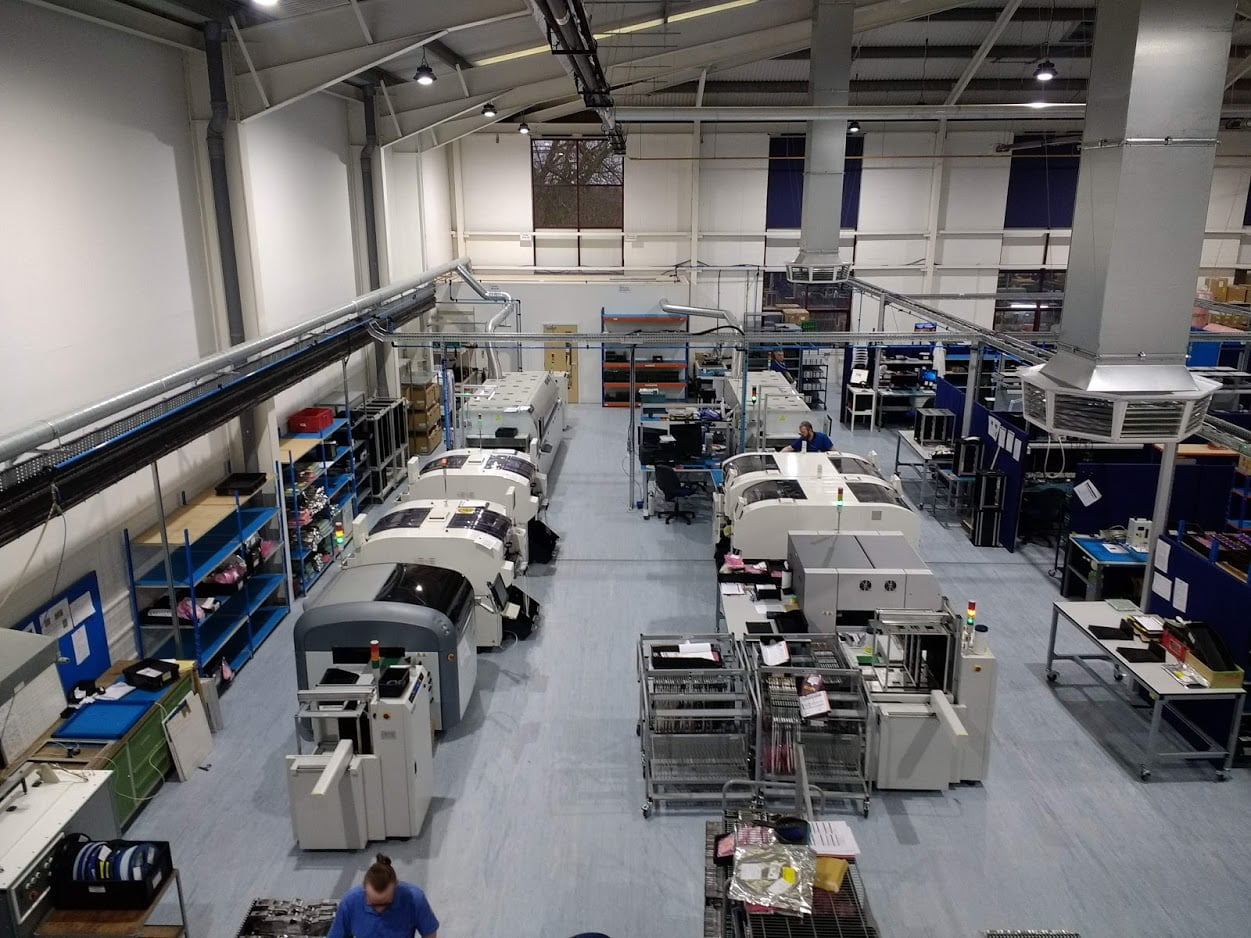In recent years, electronics manufacturing has stepped up thanks to the emergence of a range of innovative and disruptive technologies. So far in 2019, we have already seen a sharp rise in developments such as the Internet of Things (IoT), Artificial Intelligence (AI) and 3D printing – which are set to dominate the manufacturing industry in the upcoming months.
These developments have led to advancements in automation and equipment maintenance – transforming the production process and increasing the speed and efficiency of operations. We take a look at four of the major trends to peak in 2019
Leveraging the Internet of Things for real-time insights
There are currently an estimated 27 billion connected IoT devices installed worldwide – a figure that is projected to increase to approximately 75 billion by 2025. Thanks to IoT, almost every surface within the factory can be transformed into a sensor and collect vast amounts of data. This data then provides manufacturers with crucial real-time insights and updates – allowing them to optimise operations and address issues before problems arise.
So, it is no surprise that manufacturers are increasingly turning to IoT products to make informed strategic decisions, increase profitability and efficiency, improve safety and to meet compliance requirements. Over the next few months, we will likely see improved sensors and the rollout of 5G connectivity to feed this ongoing expansion of IoT.
Keeping production on track through predictive maintenance
For any manufacturer, ensuring all equipment is functioning optimally is a key priority, as a breakdown could prove incredibly costly both in terms of repairs and loss of productivity. Predictive maintenance technologies use a number of performance metrics to monitor equipment while it is in operation – meaning there is no loss of production due to equipment shutdown. Using IoT, these technologies then automate the data collection process and allow manufacturers to gain a better understanding of their systems and predict when they will fail.
In the next year or so, manufacturing is therefore likely to see widespread adoption of these predictive technologies, which could help significantly reduce maintenance costs, extend equipment life by years and minimise unplanned outages.
Using assistive technologies to improve innovation and productivity
Advances in assistive technologies have allowed manufacturing to become more intelligent than ever in 2019! For example, manufacturers can use Virtual Reality (VR) or Augmented Reality (AR) software to test different product variations during the design stage or before they go into the development process.
Both AR and VR can also improve a worker’s field of vision and show them how to perform a task and correct mistakes in real time – making it possible to quickly and effectively train unskilled workers, reduce inspection times and enable tasks to be completed faster.
Equally, AI is extremely effective at detecting and classifying problems as they arise and providing instant, timely solutions – helping to improve operations, eliminate defects, increase profitability and reduce lead times. Throughout the rest of 2019 and beyond, these assistive technologies will likely continue to have a positive impact on manufacturers.
Making production cheaper and faster with 3D printing
3D printing makes rapid prototyping possible, allowing manufacturers to produce items on demand (potentially even on the same day as requested!) rather than having to manufacture and warehouse them. This is a quicker and highly cost-effective way for product designers to test and troubleshoot products.
3D printing has already been embraced by the automotive and aerospace manufacturing industries. But over the coming months, we are likely to see 3D printing expand further into other sectors such as electronics – where it will help to make the manufacturing process cheaper, better, stronger and faster.
It’s an exciting time for electronics manufacturing and these are just a few of the trends that will continue to grow in 2019. But those companies that can take advantage of them will benefit from faster product development times, shorter product life cycles, increased speed to market and the agility to respond to immediate fluctuations in demand.
To find out more about EMS’s solutions and how we’re using the latest technological developments to deliver our services, please contact us today.












